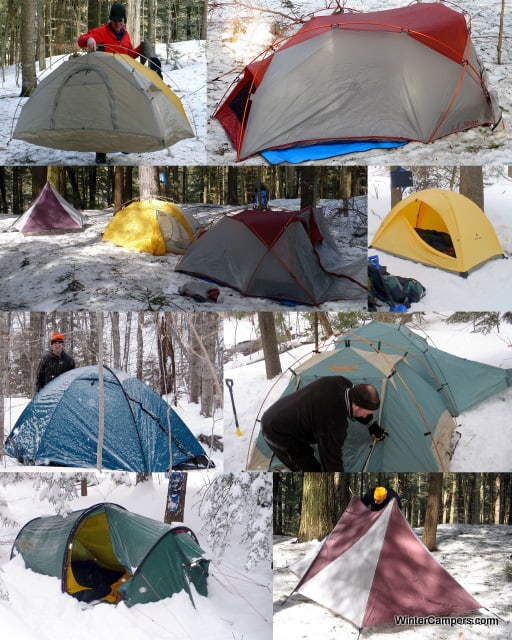I have never given tent color much thought when purchasing a new tent. Unlike buying a pair of pants, there aren’t color options when selecting a particular tent model. However, there is a lot of thought that goes into the selection of a tent color by the manufacturer.
This is from Oware, who makes tarps and other goodies.
Navy – NOLS color choice for blending in. Pros-blends in well at dusk and semi-darkness, doesn’t attract attention from people or animals. It dries quickly in sunlight. It makes the best shade if an ample insulating air distance (3 ft) is kept between you and the tarp. Best projection from snow blindness. Cons-lets less light through, dreary in dreary weather, can be hot in hot weather if fabric is close to the body.
Purple, Brown, Royal – Pros-blends in well at dusk and dark, doesn’t attract attention from people or animals. It dries quickly in sunlight. It makes the best shade if an ample insulating air distance (3 ft) is kept between you and the tarp. Best projection from snow blindness. Cons-lets less light through, dreary in dreary weather, can be hot in hot weather if fabric is close to the body.
Grey – Most popular with backpackers. Pros – blends in well in many settings. It doesn’t attract attention from people or animals. It lets lots of light through. Cons – dreary in dreary weather, lets radiant heat through in hot weather (doesn’t give very dark shade) gives little protection from snow blindness.
Bright Orange or Chartreuse – A favorite of Search and Rescue and survival kits. Pros – cheery in dreary weather, easily spotted in emergencies or when returning to camp in stormy weather. It lets lot of light through. It provides hunting safety. Cons-shows dirt, may attract unwanted attention from people or animals, gives little shade, and gives little protection from snow blindness.
Leaf green – The bow hunter’s choice. Pros- It blends in well in many settings. It lets some light through, good compromise for all around use.
Gold – The boaters pick. Pros – cheery in dreary weather, easily spotted in emergencies or when returning to camp in stormy weather. It lets lot of light through. Cons-shows dirt, may attract unwanted attention from people or animals, gives little protection from snow blindness. One thing to consider if you do snow camping and spend time inside during the day, yellow lets in a lot of light which can lead to snow blindness on a sunny day. Years ago REI did tests of colors and decided a dark orange was best for mountaineering tents- they were cheery and easy to find, but cut down on light more to help stave off snow blindness.
Most folks prefer-
• bright colors if they snow camp,
• navy, black, green or gray if they trail hike (to hide from the crowds),
• black or navy for desert for better shade with high pitch,
• orange or yellow for emergency shelters and search and rescue,
• yellow for river trips for mood enhancement on rainy days,
• blaze orange, green or gray for hunters (depending on the type of hunting military tactical) gray or green for those in bear country ( to avoid visually attracting them)
• photographers like a bit of color in their photos.

SHARE
March 18th, 2009 | Tags: tents | Category: Winter Camping, Winter Camping Gear
Comments are closed.

